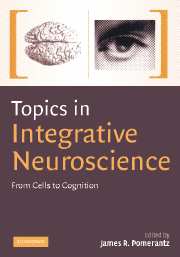Overview of neuroscience, choice and responsibility
Published online by Cambridge University Press: 08 August 2009
Summary
Neuroethics overview
The reach of neuroscience is unusually broad. As the title of this book indicates, our present interest in neuroscience extends all the way from cells to cognition – from how neurons operate at the microscopic level to how people think, speak, perceive, and remember at the macroscopic level. Given that the brain is the most complex structure in the known universe, this breathtaking breadth may come as no surprise and makes it understandable why neuroscience is of compelling interest to engineers, physicians, computer scientists, and even to musicians.
The reach of our concerns is so great that it engages even philosophers, including those grappling with the most difficult – perhaps intractable – questions of them all, those touching on the question of human choice and free will. In this special chapter with which we lead off this book, the noted philosopher Patricia Churchland takes on the challenge of reconciling the seemingly deterministic neurological system underlying human choice behavior, the common belief in free will, and the question of who, if anyone, is responsible for the behavior of human beings. When people commit crimes or other ethical breeches, may they rightfully claim that “their neurons made them do it”? Or, is there lurking within their nervous systems an accountable agent that must take responsibility for decisions made?
- Type
- Chapter
- Information
- Topics in Integrative NeuroscienceFrom Cells to Cognition, pp. 1Publisher: Cambridge University PressPrint publication year: 2008



